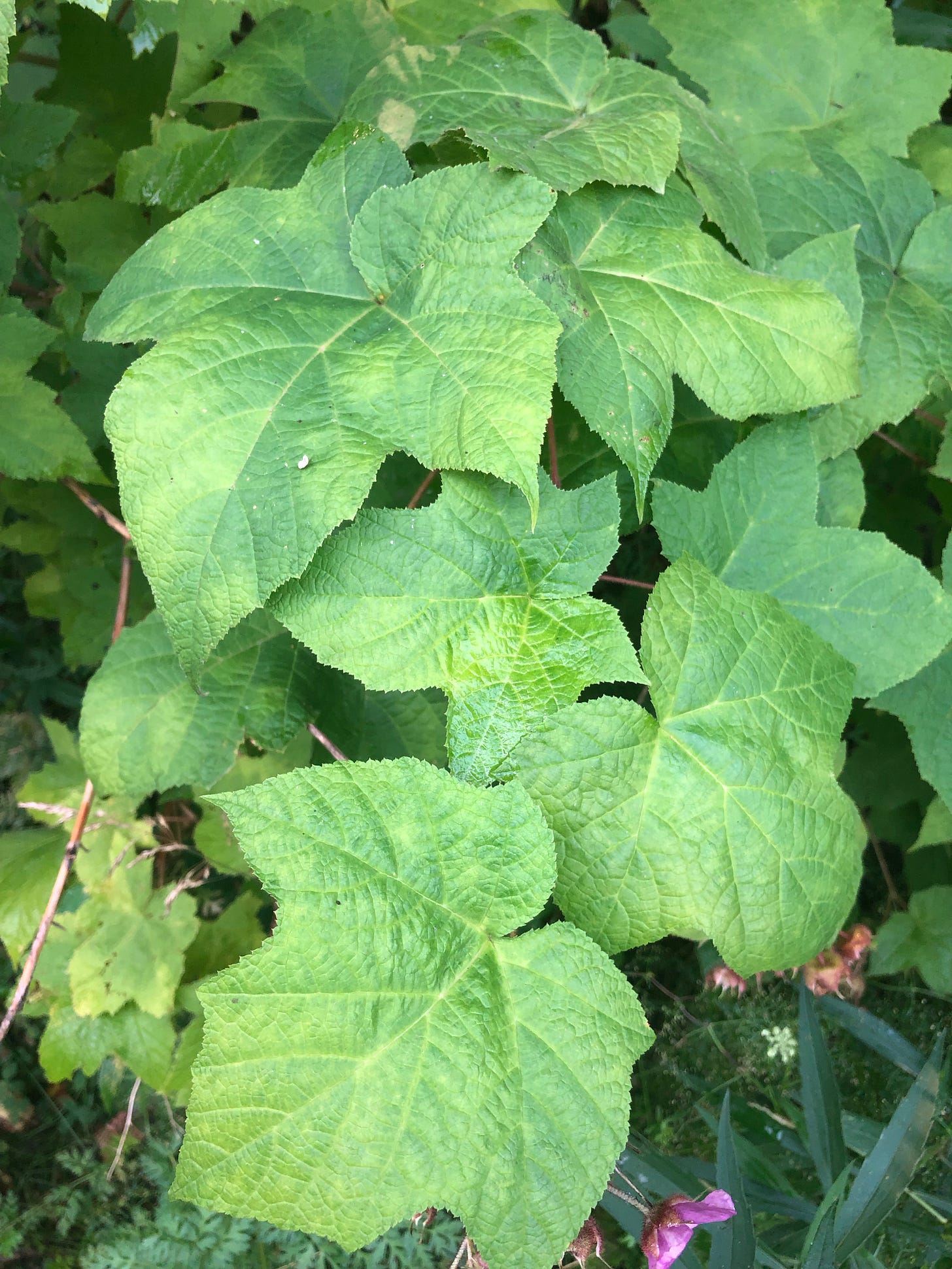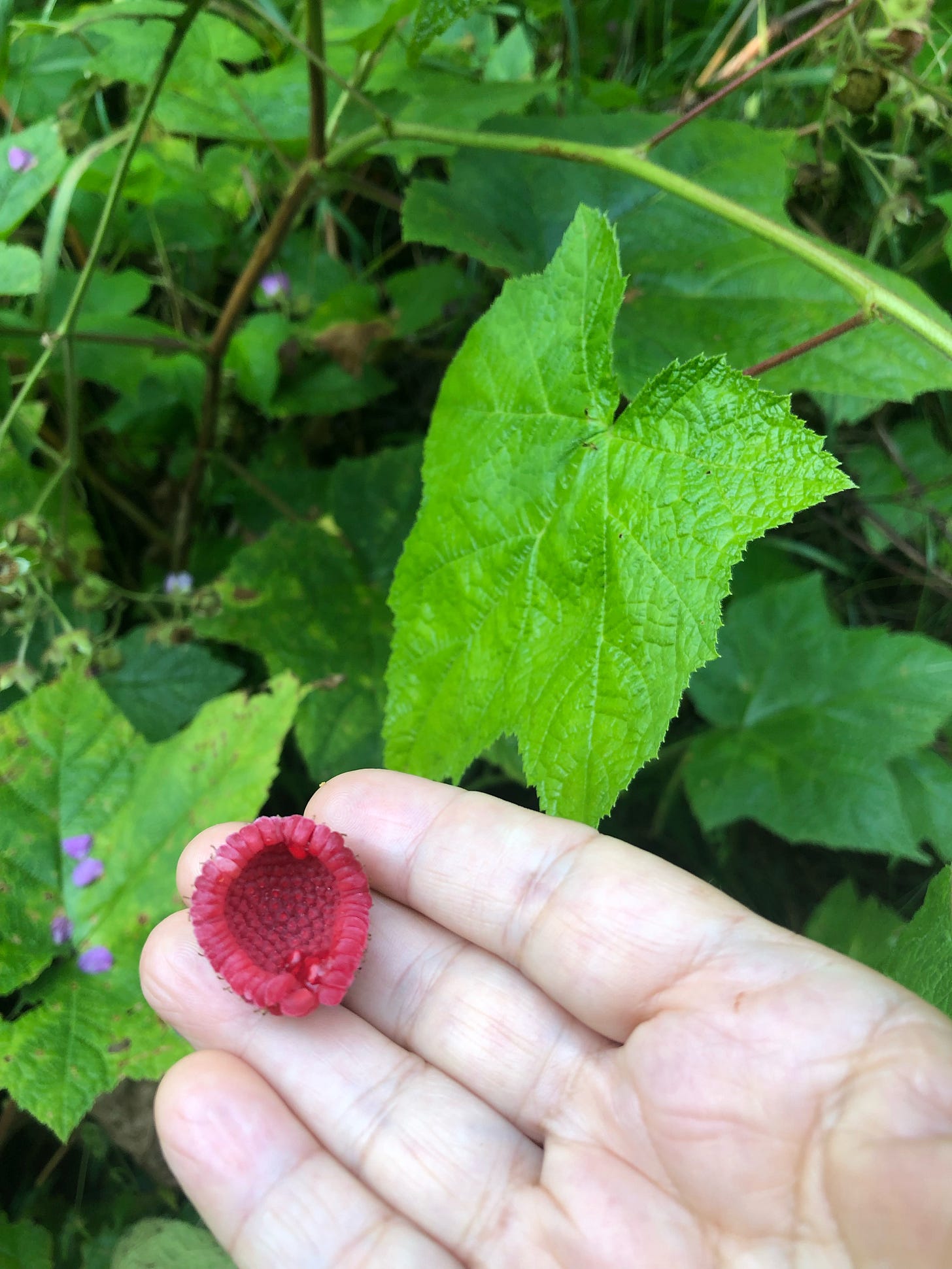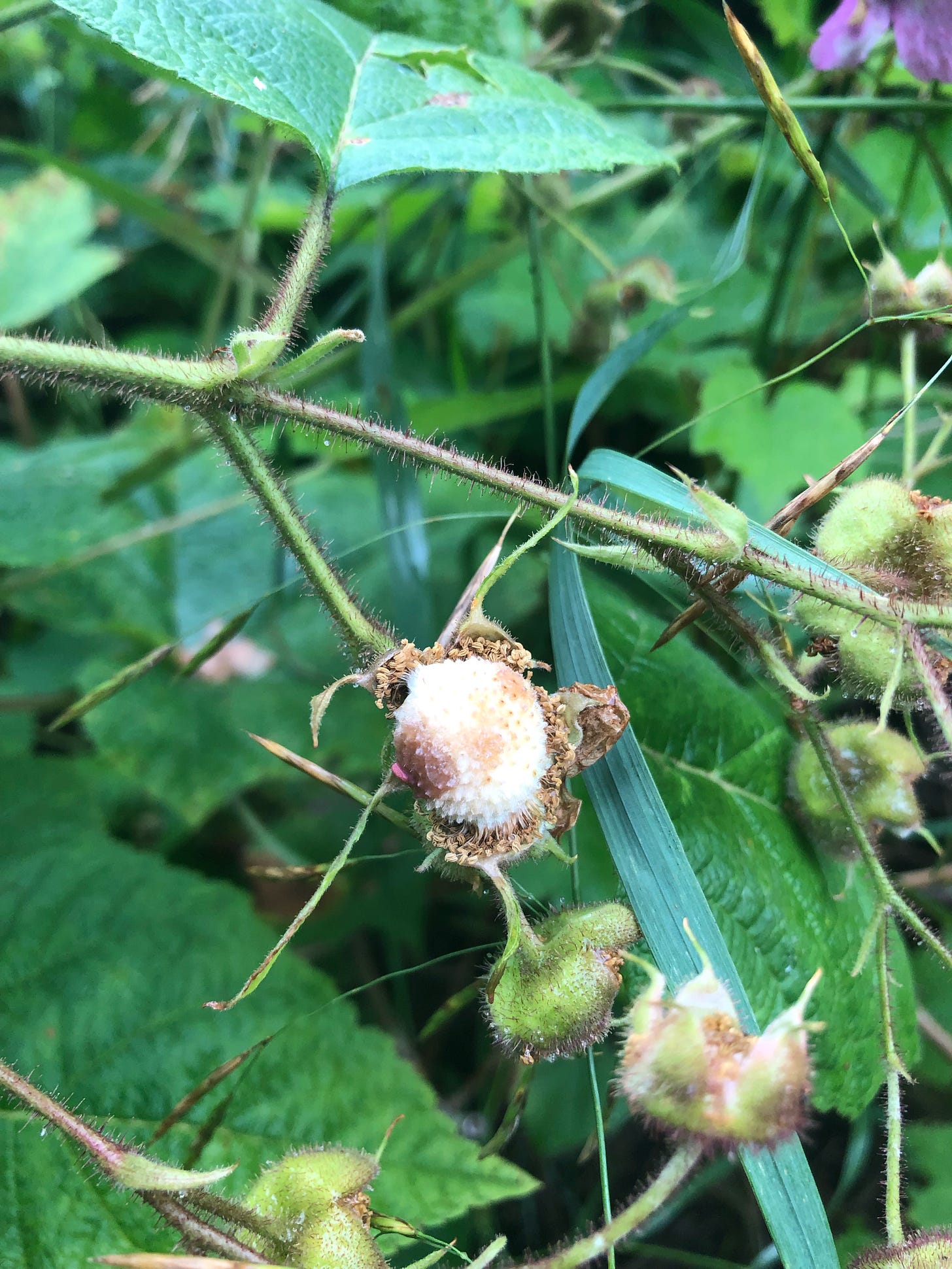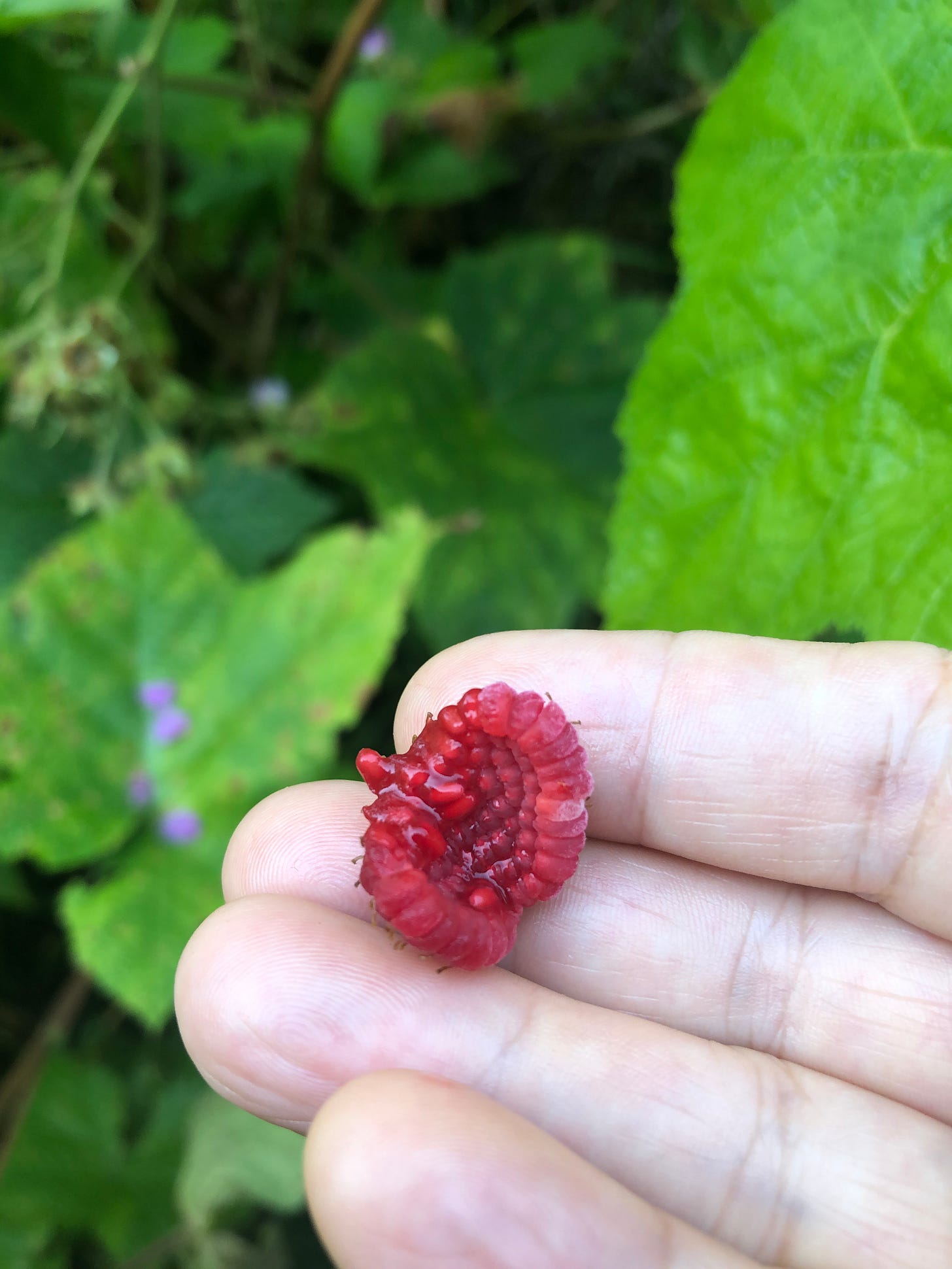Thimbleberry
What's with this giant purple raspberry?
If you’re walking in the woods and you happen across an opening in the canopy where a crack of sunshine peaks in, you might find growing there a large shrub with maple-shaped leaves…
It looks like a bramble but surprise (and thankfully for your bare legs), the stems are thornless! The giant leaves have serrated edges and rigid hairs and if you see this plant in mid summer, you’ll see beautiful pink flowers that are giant versions of the blooms you’d find on raspberry canes.
Fast forward about a month or so (to now!) and these blooms turn into the biggest, most scrumptuous looking berries…but wait. If you read up on thimbleberry, also known as purple-flowering raspberry (Rubus odoratus), you’ll find various descriptions of it’s fruit:
“Berries are insipid, but edible.”
“Berries are edible but do not have much taste.”
“As for human consumption, the fruit lacks the sweetness and flavor of its bramble cousins.”
Really? Does this look insipid to you?
Do you dare?
So here’s where I can help you.
Don’t believe everything you read (except on this blog lol!) … Further reading clearly states that the berries are favoured by birds, bees as well as small and large mammals. Maybe these animals don’t mind the “insipid” taste, I reasoned…
I accept the challenge! But first, while I have you, notice the size of this berry and how perfectly it would fit over the tip of my finger…much larger than a regular raspberry:
And yes, I ate that one. In fact, for every 3-5 that I eat, I give Scoutie 1.
Removed from its receptacle (or torus), it leaves behind a convex structure that clearly resembles a thimble.
All this goes without saying that you should do your research before eating something in the wild. Make sure it isn’t poisonous. Duh. If they say it’s insipid, that’s ok. So, I was up for the challenge…
Apart from the surface of the berry feeling a bit like suede on my tongue, the inside was luscious…sweet…dare I say, really good!
I think it’s easy for sources to simply repeat other sources, rather than doing the work themselves. But my curiosity was peaked and I had to taste this berry myself…and I’m glad I did!
Should you grow this purple-flowering raspberry in your garden? Well, only if you have a large garden and you don’t mind it spreading and creating a suckering grove.
Rubus odoratus — the “odour” part refers to the bloom (which I am ashamed to say I did not smell) — makes sense since this plant falls within in the Rosa family (that is, rose).
This wild raspberry is naturally found in the eastern parts of North America, from northern Ontario in the north to the Great Lakes in the west (it has also naturalized in Washington State), to Georgia in the south. It can also be found in some locales in the United Kingdom as an introduced species.
Rubus is a name derived from the Latin word for red, that is, ruber. It was originally used in the 1400s to describe the raspberry because of its red fruit, but is also the genus used for many other berries; in fact 250 to 700 species can claim the genus ‘Rubus’. This particular species grows in full sun or part shade, but will also happily grow in more substantial shade. The canes can grow from 3 to 6 feet tall, and one plant can sucker over a distance of 12 feet. The bloom time is anywhere from June to August, with fruits maturing in the weeks following. They attract both birds and butterflies, as well as mammals who eat the succulent berries, and will tolerate growing within the root zone of Black Walnut trees, not a small feat due to the latter’s toxic chemical juglone which inhibits the growth of many herbaceous and woody plants.
Native peoples have used the leaves of this plant to treat sores, boils, diarrhea and even dysentry. The root has been used in the treatment of diarrhea, colds and toothaches, while the branches have been used to treat stomach upset and kidney issues. The berries have been used as a diuretic.
The fruit also has been used in the creation of dye — it produces a dull blue or purple colour.
This bramble is a worthy plant for your country property — if you have the space, wildlife will thank you! Plus, you’ll have yummy berries with which to make your next pie or jam….








